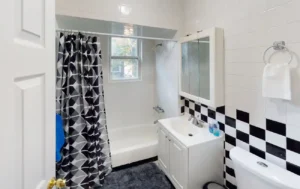
Sober living caters to individuals battling various substance addictions, including alcohol. Ensure you research homes specializing in alcohol recovery to provide him with the most tailored support. The supportive environment and continuous access to recovery resources significantly lower the risk of relapse. Regular drug testing and the community’s encouragement provide extra layers of accountability, further protecting your sobriety. Sober living homes make the difference for many people between ongoing addiction and freedom from substance abuse. However, you can use the table above to get started, and then continue with your own research to find a recovery residence that meets your needs.
Family and Children’s Programs
The best facilities employ compassionate staff and enforce strict rules that support the recovery process. All of a sober house’s residents are expected to pursue better health and a substance-free life. Sober living homes vary depending on how they’re run and the services they provide. Some sober living homes may also cater to specific groups, such as women, men, young people, older adults or LGBTQIA individuals. While at an SLH, residents may be able to resume other aspects of their lives before recovery, such as work or family obligations.
- These rules are not just guidelines but essential structures that help maintain the path to recovery.
- Sober living homes are an effective resource for individuals who have completed treatment and are ready to begin their lives in recovery.
Level Three
The Substance Abuse and Mental Health Services Administration (SAMSHA) fully endorses level three sober homes. Sober living homes are places where someone in recovery can find independence while learning to seek and obtain community resources necessary for long-term recovery. We do not receive any commission or fee that is dependent upon which treatment provider a caller chooses. You can also look into Oxford Houses, which provide all recovering users the opportunity to develop comfortable sobriety without relapse. Residents usually sign a contract or written agreement outlining all of the rules and regulations of living at the sober living home. Sober living homes are known for strictly enforcing rules, and violations usually result in eviction.

The History of Sober Living Homes
In Oxford Houses, individuals who relapse cannot return until they complete a 28-day rehab program or complete treatment and demonstrate an ability to continually attend support group meetings. Sober living homes are maintained through fees, and residents can usually stay as long as they want. Unlike many halfway houses, sober homes are not monitored by state agencies.
How Sober Living Houses Work
- By living together, sharing experiences, difficulties, and accomplishments, and participating in communal activities, residents can build a strong support system that will assist them in long-term recovery.
- They provide a safe and supportive setting where you can develop life skills and coping mechanisms essential for long-term sobriety.
- Sober living houses can foster peer encouragement, camaraderie, character development, and accountability in residents.
However, the way they work, the length of stay, and the funding options differ. In some cases, sober living homes will contract with licensed drug rehabilitation centers and therapists as a means for providing an even greater level of care. These types of sober livings do tend to charge higher fees, however, they are often able to provide a very affordable alternative to what would otherwise constitute high-priced inpatient treatment. The services, rent, rules and living conditions at sober living homes vary from place to place. Some homes are part of a behavioral health care system where residents live next to a rehab clinic, participate in outpatient therapy and have access to the clinic’s recreational activities. People who have undergone addiction treatment in rehab centers often struggle to stay sober as they adjust to the real world.

Types of Sober Living Houses
Substance use treatment providers may offer oversight in some instances, although this is not always the case. Rockland Recovery Homes is certified by New York State as a not-for-profit organization with 501(C)3 status. We will open recovery homes in Rockland County to provide a safe, relaxing, enjoyable place to live, for people working at recovery from a SUD.
These homes can offer an in-between option for individuals after they complete a treatment program and before they return to their homes and lives. This transition can provide continued support while residents learn to apply their newly learned self-reliant skills to real-life situations while they remain drug- or alcohol-free in a community environment. sober house near mes are usually peer-run facilities encouraging continued substance use disorder recovery. Occasionally they are run by a charity or an addiction treatment center as a less structured and more informal version of the inpatient treatment plans they offer. Sober living houses allow residents to live together in a drug and alcohol-free space.
They are also commonly known as sober houses, recovery homes, halfway houses or recovery residences. Sober living houses and halfway houses are often used interchangeably as they both provide a substance-free living environment for those suffering from addiction. Differences between the two can stem from funding, length of stay, and requirements to apply to live there. Sober living homes typically do not limit the length of stay and may not require previous attendance in a formal addiction treatment program. Halfway houses, on the other hand, typically have a time limit and require residents to either be attending a treatment program or have recently completed one. This intensive outpatient program is often used as a step-down from inpatient care or a step-up from traditional outpatient services when a higher level of care is needed.
